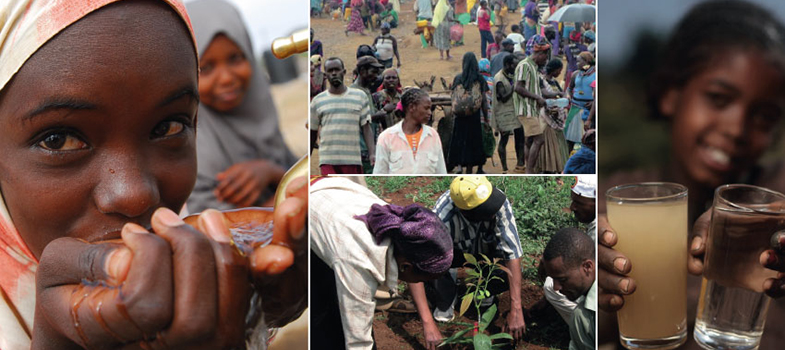5.3.2 Water supply and sanitation
The provision of water and sanitation services to growing urban settlements, peri-urban and slum areas presents critical challenges. The increased demand for water from the growing population can place added stress on already stretched resources. In and around cities, water is commonly in short supply and subject to increasing competition by different users. Urban growth leads to increasing demand for water for industrial and domestic use, which conflicts with agricultural demands.
It is especially difficult to provide water and sanitation services to deprived areas and the poorest people. Many people in these areas live without access to safe drinking water and proper sanitation. Even where adequate water supplies are available, sanitation and wastewater disposal are often inadequate or missing. Pit latrines and septic tanks are the usual methods for human waste disposal but they have limited capacity and are not always adequate to cope with the quantity of waste produced by many people living close together. Overflowing latrines and septic tanks contaminate surface water and create a serious health risk.
The lack of these essential services threatens not only the health and the environment of people in slum areas, but also that of people living in formal urban areas. In Africa and Asia most of the urban centres have no sewers at all, which affects rich and poor alike. This is true of many cities with a million or more inhabitants, as well as smaller cities and towns.
5.3.1 Housing
